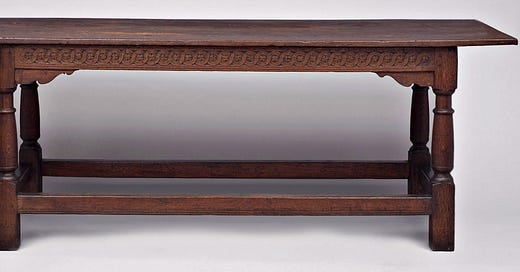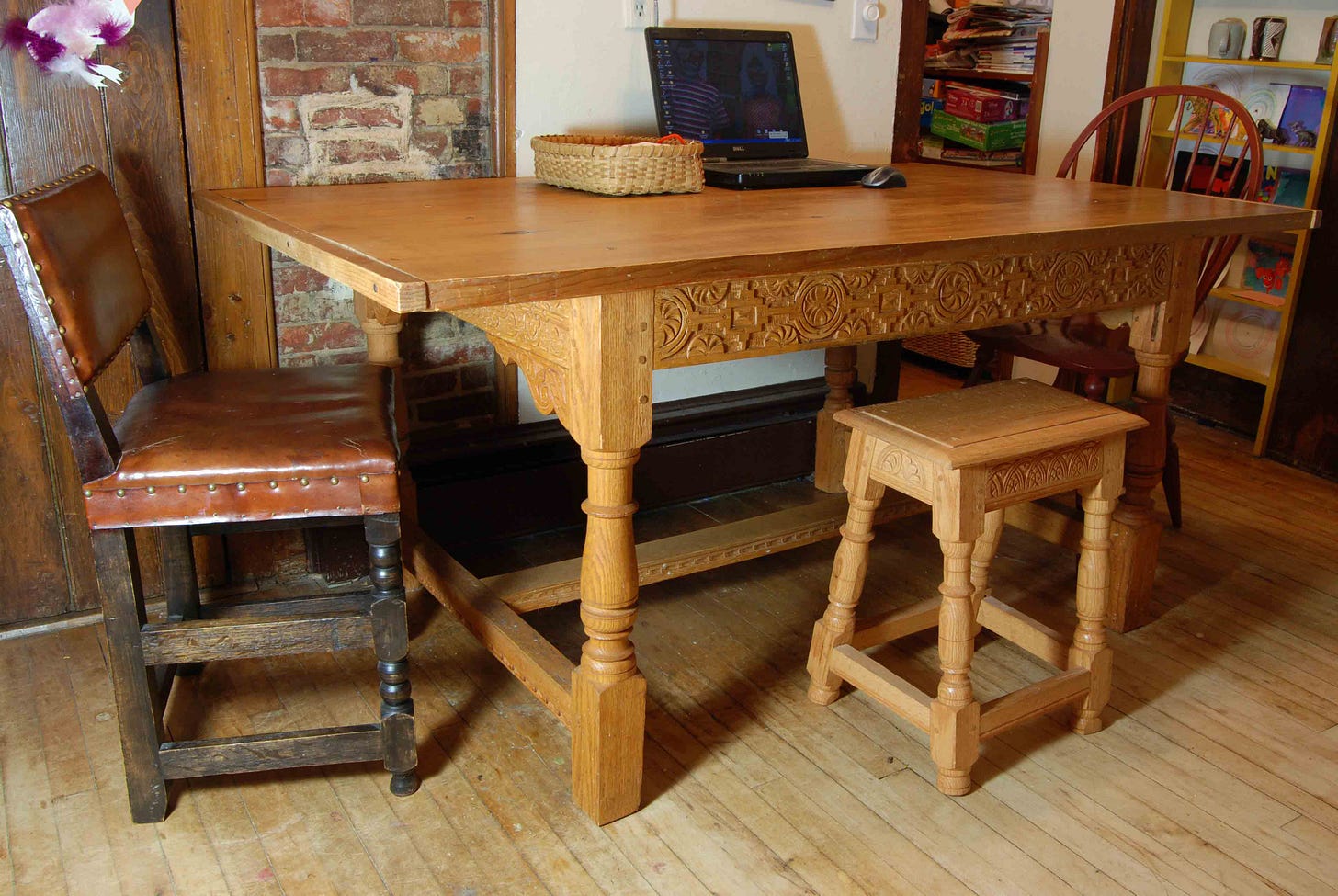Judging by the probate inventory references, tables in 17th century New England could be round, square, small, large, joined, framed, long, short and more besides. One of the most well-known examples is the long table at the Wadsworth Atheneum - a beautiful frame. The brackets and the top are replacements, done long ago. It's big - 34” high, over 7’ long and 28” across its narrow dimension.
I made a pretty close copy of that table some years ago - with a conjectural top made up of quartersawn oak boards. The challenge is always about the top construction. Are there cleats/end caps? It’s a good idea to have them, but what form of connection should there be between them and the end grain of the top?
This “long” table at the Smithsonian - (long in this case just meaning rectangular, it’s top is just under 4’ long) -
has a pine top with narrow strips seemingly just nailed into the end grain of the top boards.
I did this on the table in my kitchen. It’s fast, simple and somewhat effective.
[just as an aside - that photo of our kitchen is complete fiction…it never looks like that.]
On the square table at the Historical Society of Old Newbury - the only one from my previous post with its original top - there’s a groove running along the cleat, with a corresponding tongue fitting in it.
If there are any actual tenons too, they aren’t pinned. I mentioned in that first post that I haven’t seen that table in detail since 1993. Maybe I should stop in there & have a look. I don’t have any detail photos of it - just these lousy scans-of-slides.
Keep reading with a 7-day free trial
Subscribe to Follansbee's Substack to keep reading this post and get 7 days of free access to the full post archives.







